The containers we choose for our houseplants do more than just showcase our botanical companions—they reflect our values and impact our planet. As environmental awareness grows, many plant enthusiasts are seeking sustainable alternatives to traditional plastic pots. Eco-friendly plant containers reduce waste, minimize resource consumption, and often bring unique aesthetic qualities to indoor spaces. Whether you’re an experienced plant parent or just beginning your indoor garden journey, understanding your options for sustainable containers can help you make choices that align with both your design preferences and environmental ethics.
This guide explores the world of eco-friendly indoor plant containers—from biodegradable options to creative upcycling ideas—empowering you to nurture your plants while honoring the earth.
Understanding the Environmental Impact of Traditional Plant Containers
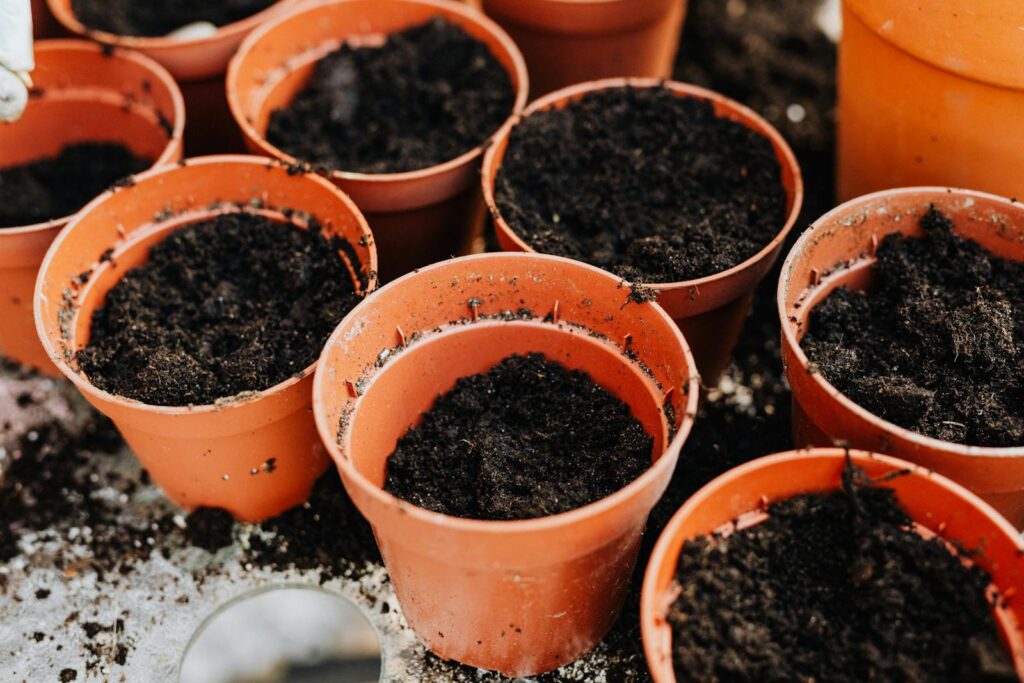
Conventional plastic plant pots contribute significantly to environmental degradation through their production, use, and disposal. These containers are typically manufactured from petroleum-based materials, requiring substantial energy inputs and generating greenhouse gas emissions during production. Once in use, plastic pots can leach harmful chemicals into soil and groundwater, particularly when exposed to heat and sunlight. The most concerning aspect is their end-of-life impact—plastic pots can take hundreds of years to decompose, crowding landfills or polluting natural environments. Many garden centers and nurseries generate mountains of single-use plastic pots annually, with the horticultural industry estimated to use over 500 million plastic containers each year in the United States alone.
Understanding these impacts helps contextualize the importance of seeking more sustainable alternatives for housing our beloved indoor plants.
Biodegradable Fiber Containers: Nature’s Solution
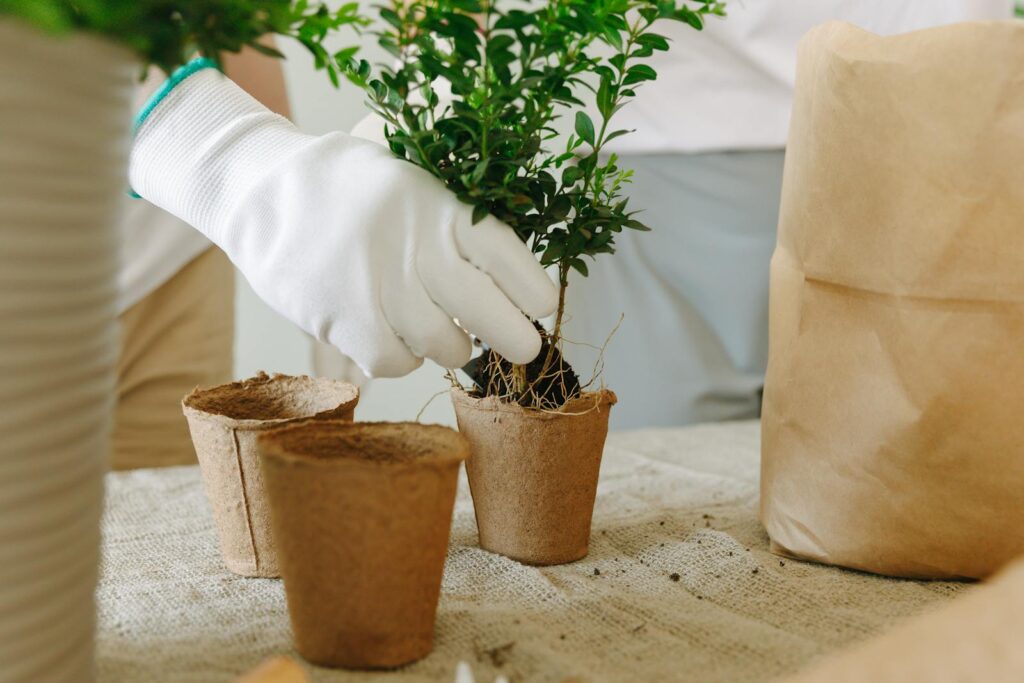
Biodegradable fiber containers represent one of the most promising alternatives to plastic pots, offering environmental benefits without sacrificing functionality. These containers are typically made from compressed plant fibers like coconut coir, rice hulls, bamboo, or recycled paper pulp—materials that would otherwise be agricultural waste. Unlike plastic pots that impede root growth, fiber containers allow for better air circulation and can even enhance drainage, creating healthier growing conditions for many plants. When a plant outgrows its fiber container, the entire pot can be planted directly into a larger container where it will naturally decompose, eliminating transplant shock and reducing waste. Most fiber containers fully break down within 1-2 years depending on environmental conditions, returning valuable organic matter to the soil rather than persisting as pollution.
Their natural appearance also complements indoor plants beautifully, providing an earthy aesthetic that plastic cannot match.
Ceramic and Terracotta: Traditional Sustainability
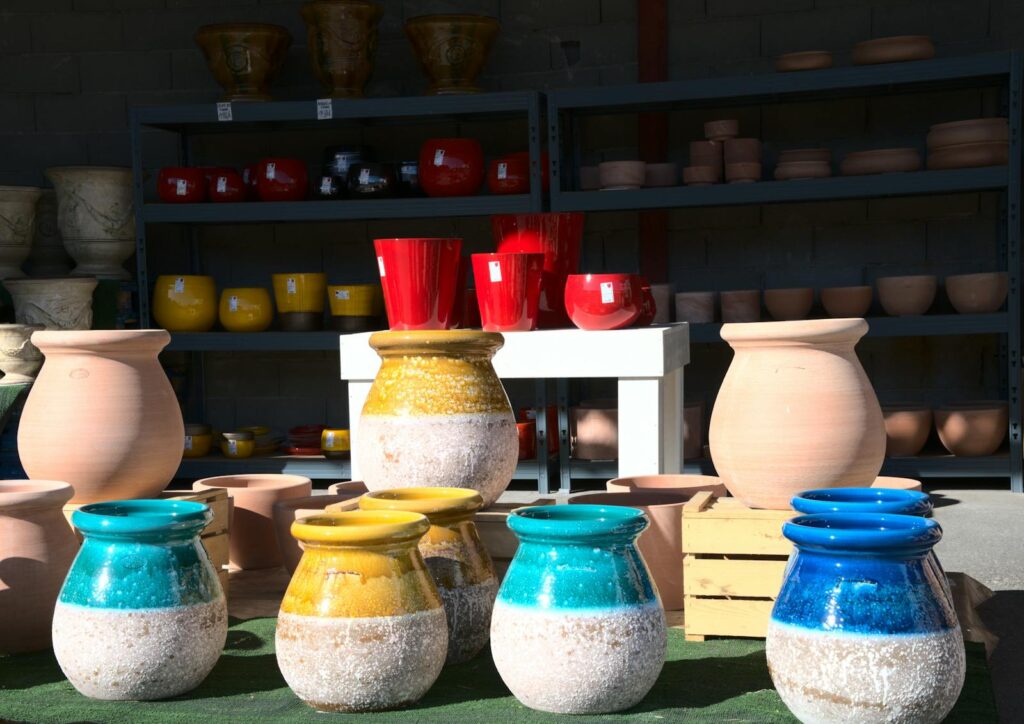
Ceramic and terracotta containers represent time-tested sustainable options that have housed plants for thousands of years across diverse cultures. Made from natural clay that’s shaped and fired, these containers are biodegradable at their core, eventually returning to the earth as natural minerals. The porous nature of unglazed terracotta provides excellent breathability, preventing water-logged soil and reducing the risk of root rot—a common issue with houseplants. While their production does require energy for firing, high-quality ceramic pots can last decades or even generations with proper care, making them significantly more sustainable than single-season plastic containers. Local artisan-made ceramic planters offer additional environmental benefits by reducing transportation emissions and supporting regional economies and craft traditions.
When selecting ceramic options, look for lead-free glazes if choosing glazed varieties, and consider the durability factor—heavier, thicker-walled pots typically offer greater longevity and resistance to cracking during seasonal temperature changes.
Reclaimed Wood and Bamboo Planters
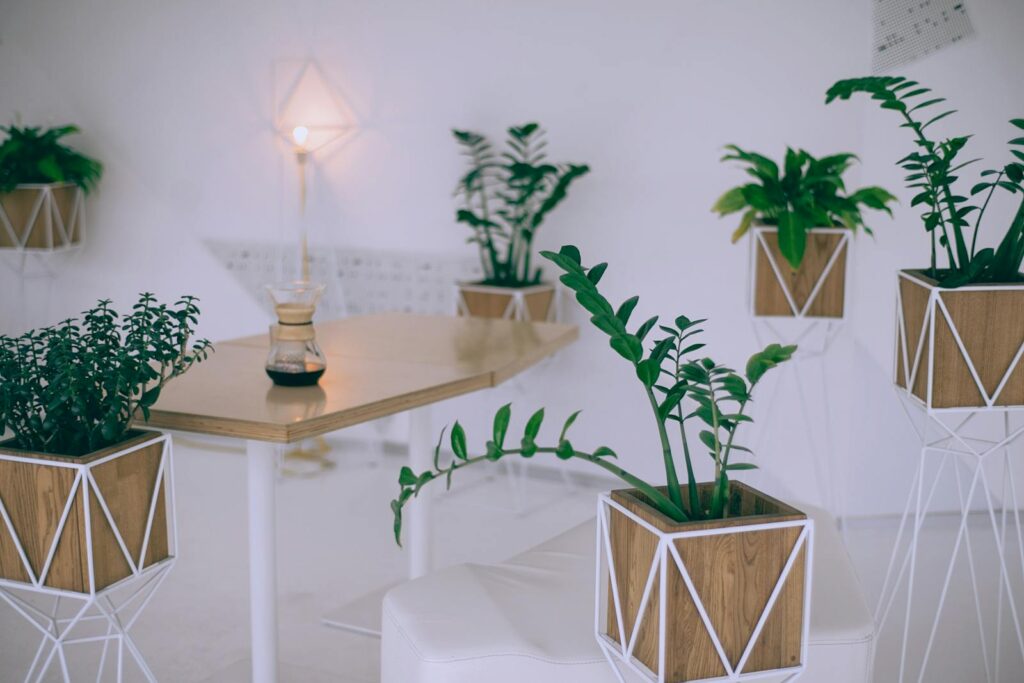
Reclaimed wood and bamboo planters bring warmth and natural texture to indoor spaces while offering substantial environmental benefits. Reclaimed wood containers repurpose timber from old buildings, barns, or furniture, preventing usable materials from entering landfills and reducing demand for newly harvested trees. These containers often carry unique character marks, grain patterns, and patinas that tell stories of their previous lives, adding depth and interest to plant displays. Bamboo alternatives provide another excellent option, as bamboo grows remarkably quickly—sometimes several feet per day—making it one of the most renewable natural materials available. When treated properly, both wood and bamboo containers can last many years, particularly when lined with natural materials to prevent rot from constant soil contact.
The natural variation in these materials means each planter becomes a unique piece, impossible to replicate exactly, adding authentic character to your indoor garden that mass-produced containers cannot match.
Recycled Metal Containers: Industrial Chic
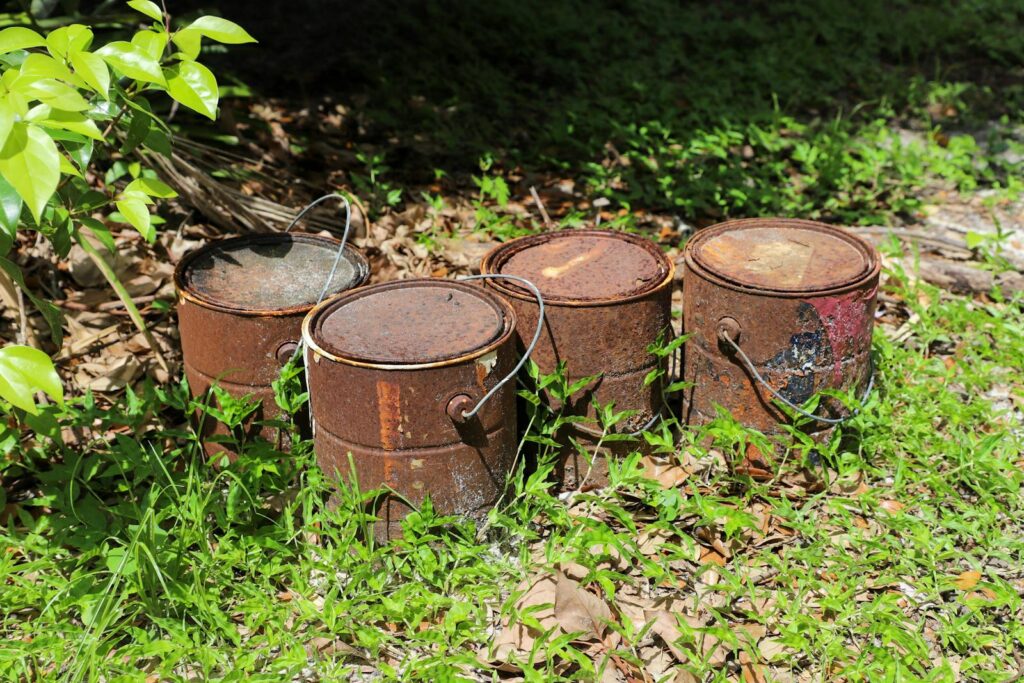
Recycled metal containers offer a distinctive industrial aesthetic while diverting materials from the waste stream. Old tin cans, galvanized buckets, antique watering cans, and even unused cookware can find new purpose as striking plant homes with minimal environmental impact. Metal containers have exceptional longevity, often outlasting many other container types, though they require proper drainage holes to prevent waterlogging plants. The thermal conductivity of metal is an important consideration—these containers can quickly transfer temperature to the soil, potentially stressing plant roots during extreme heat or cold unless properly insulated. Some metals, particularly aluminum, require significant energy to produce initially, but recycling these materials uses a fraction of that energy—approximately 95% less for aluminum—making reused metal containers an environmentally sound choice.
For a cohesive look, consider grouping different sized metal containers in similar finishes, or contrast their industrial quality with soft, trailing plants for an appealing visual balance.
Glass Containers for Water Propagation and Planting
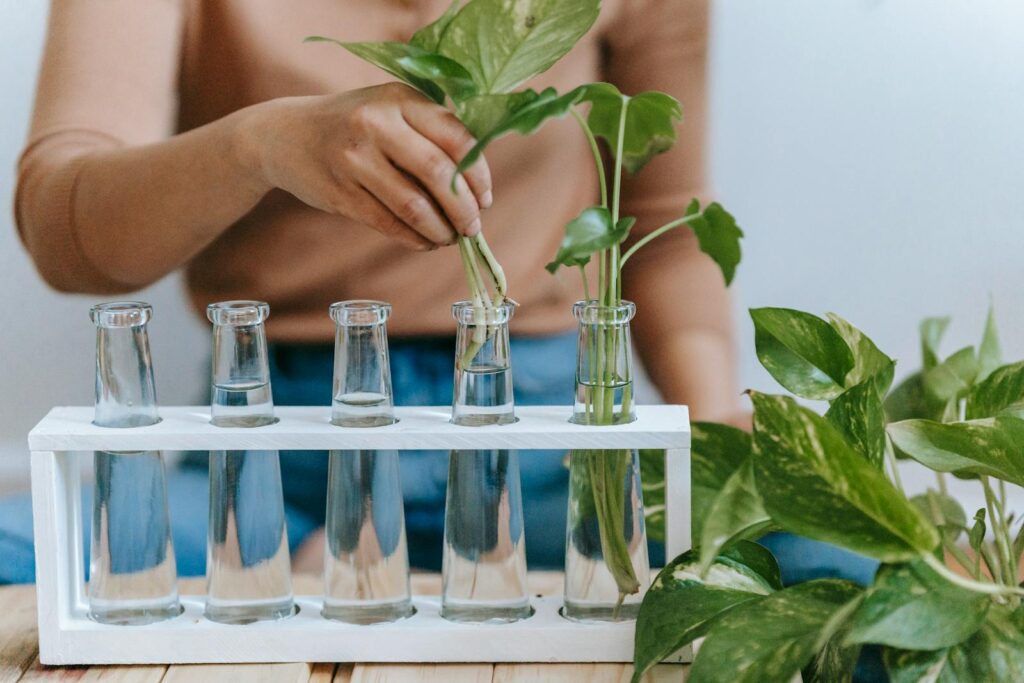
Glass containers provide elegant, infinitely reusable homes for certain indoor plants, particularly those that thrive in water or high-humidity environments. Repurposed glass jars, bottles, and vases offer perfect vessels for water propagation, allowing you to watch root development while reducing waste headed to recycling facilities or landfills. For plants like pothos, philodendron, and peace lilies that can grow permanently in water, glass containers eliminate the need for soil media entirely, reducing resource consumption while creating striking displays of both foliage and root structures. When using glass for traditional soil planting, creating proper drainage becomes essential—consider adding activated charcoal layers and decorative stones to manage moisture levels, or drill drainage holes using specialized glass drill bits if you have the proper tools and safety equipment.
Glass containers allow light to reach a plant’s root zone, which can promote algae growth, so choosing amber or blue glass can help mitigate this issue while adding distinctive color to your plant display.
Hypertufa Containers: DIY Sustainability
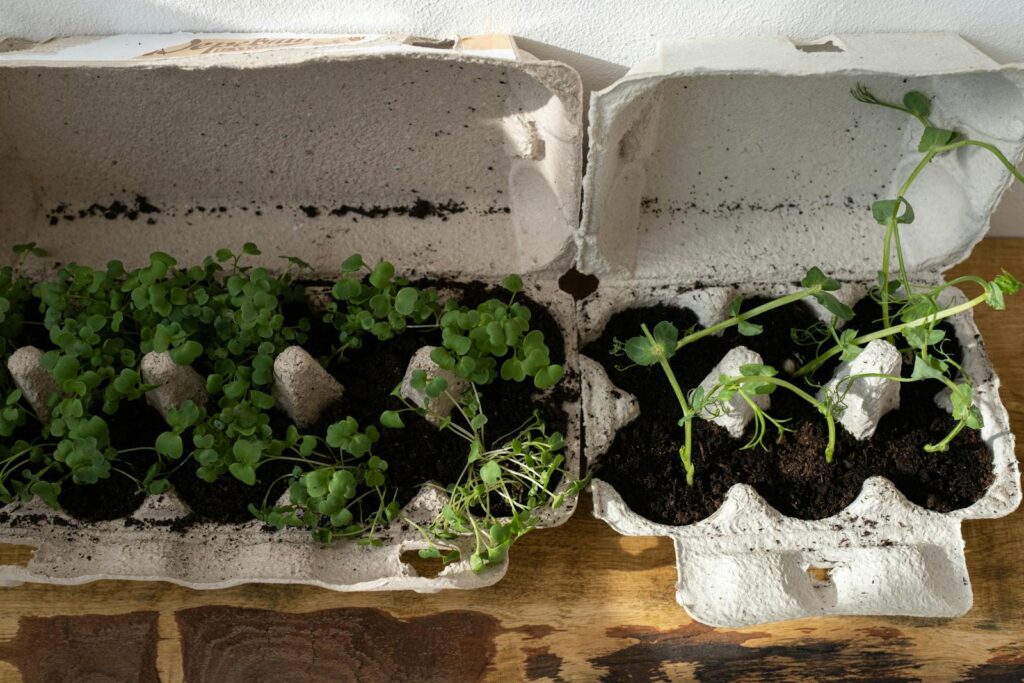
Hypertufa containers represent a satisfying DIY approach to sustainable plant housing, allowing gardeners to create lightweight, porous containers with an attractive weathered stone appearance. This material—a mixture of portland cement, peat moss, perlite, and water—mimics natural tufa rock, a limestone formed by precipitation of calcium carbonate, historically prized for its lightweight yet durable qualities. Creating hypertufa containers allows complete customization of size, shape, and appearance while using minimal resources compared to commercially manufactured alternatives. The porous structure of hypertufa provides excellent drainage and aeration for plant roots, similar to unglazed terracotta but with greater frost resistance for containers that transition between indoor and outdoor use seasonally. While traditional hypertufa recipes include peat moss, environmentally conscious gardeners can substitute coconut coir—a renewable byproduct of coconut processing—to create an even more sustainable option.
With proper curing and maintenance, hypertufa containers can last decades, developing character and patina as they age, becoming heirloom containers with personal history and minimal environmental impact.
Creative Upcycling: From Household Items to Plant Containers
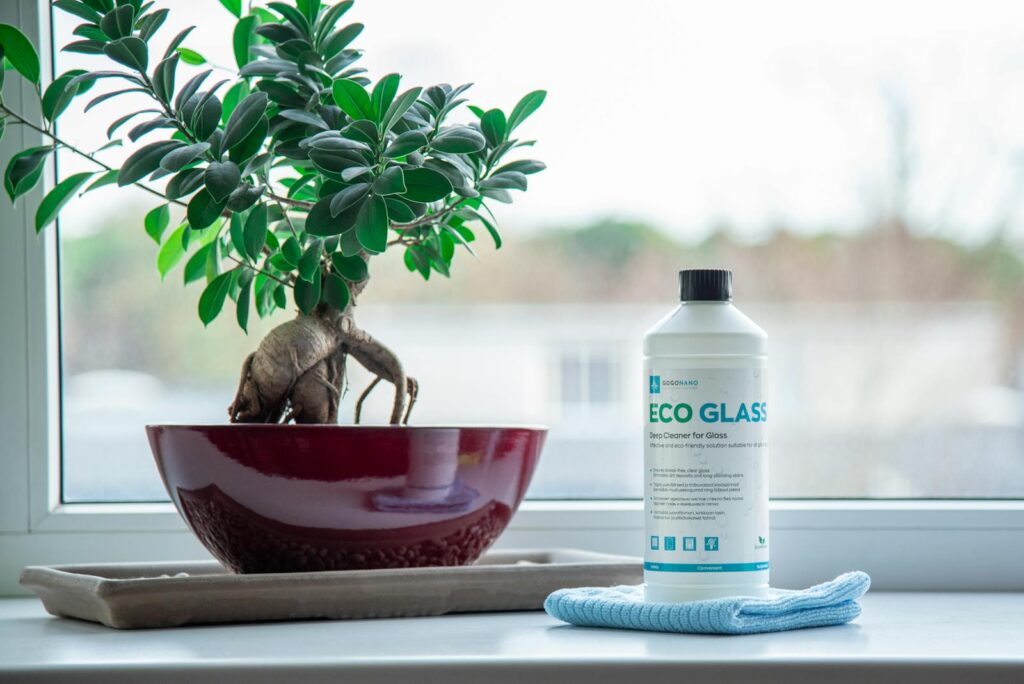
The practice of upcycling transforms would-be waste into functional plant containers, representing perhaps the most accessible entry point into sustainable container gardening. Virtually any vessel that can hold soil and provide drainage can become a unique planter—vintage teacups, wooden crates, worn-out boots, chipped enamelware, obsolete technology housings, or musical instruments past their playing prime. These unexpected containers add personality and conversation-starting elements to indoor plantscapes while extending the useful life of objects that might otherwise be discarded. Beyond the environmental benefits, upcycled containers often carry emotional resonance or nostalgic value—housing plants in your grandmother’s colander or a mug from a memorable vacation adds layers of meaning to your plant care practice. When upcycling, remember that proper drainage remains essential for plant health, so adding drainage holes or creating systems with activated charcoal and gravel can help manage moisture in containers not originally designed for plants.
The only real limitation with upcycled containers is your imagination and willingness to see potential in items others might overlook.
Fabric Grow Bags and Containers
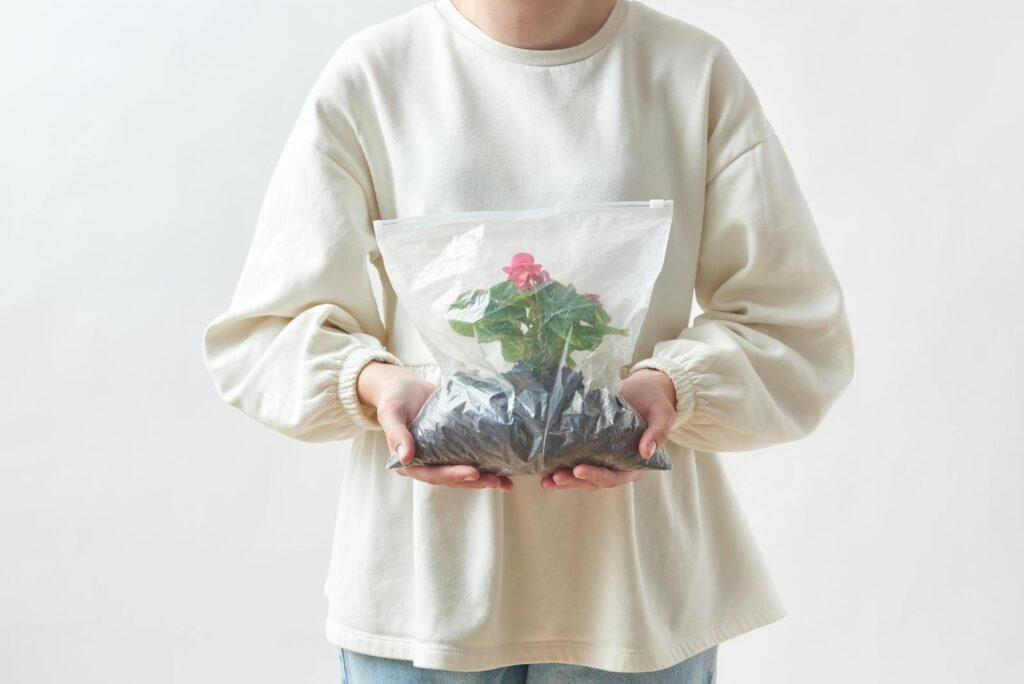
Fabric grow bags and containers have gained popularity as lightweight, breathable alternatives to rigid plant pots, offering several environmental advantages. Typically made from non-woven polypropylene, recycled materials, or natural fibers like hemp or burlap, these soft-sided containers promote healthy root development through a process called air pruning—when roots reach the container’s edge and contact air, they naturally stop growing outward and branch into new feeder roots, preventing the circling root patterns common in plastic pots. This root structure enhances nutrient absorption and plant vigor while reducing the likelihood of becoming root-bound. Fabric containers also regulate soil temperature more effectively than plastic or ceramic, providing insulation during temperature fluctuations that can stress sensitive indoor plants. While some synthetic fabric containers still incorporate petroleum-based materials, their reduced material requirements and longer useful lifespan compared to rigid plastic pots represent environmental improvements.
For the most eco-friendly options, seek bags made from organic cotton, hemp, or recycled textiles, which decompose naturally at the end of their useful life or can be composted depending on their specific composition.
Self-Watering Systems with Sustainable Materials
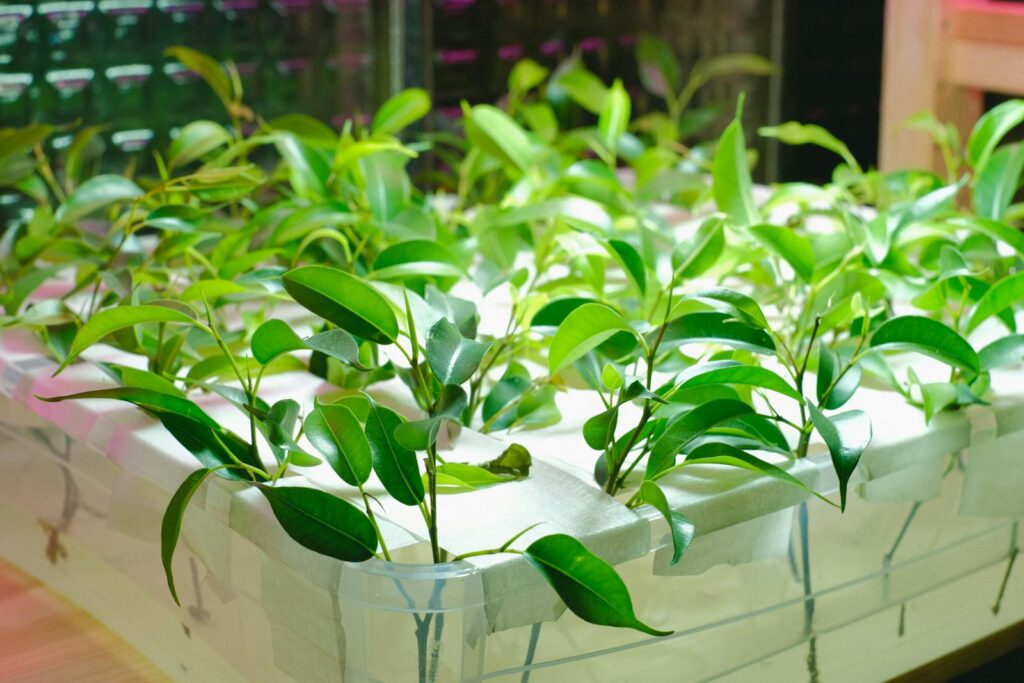
Self-watering containers constructed from sustainable materials represent an innovative intersection of plant care convenience and environmental responsibility. These systems typically feature a water reservoir beneath the soil compartment, connected through a wicking mechanism that delivers moisture to plants as needed, reducing water waste while ensuring consistent hydration. Eco-friendly versions replace traditional plastic components with alternatives like recycled glass water reservoirs, bamboo outer shells, clay wicking systems, or reservoir bases made from biodegradable materials. Beyond water conservation benefits, these systems can extend time between watering sessions, making indoor gardening more accessible for busy plant enthusiasts or during travel periods. When selecting or constructing sustainable self-watering containers, focus on designs that separate components for easy repair or replacement, avoiding systems where a single broken plastic part renders the entire unit unusable.
Some innovative commercial options now use mycelium (fungal root structures) components or algae-based bioplastics for reservoir systems that offer the convenience of self-watering with dramatically reduced environmental footprints compared to conventional petroleum-based plastics.
Considering Container Size and Plant Needs
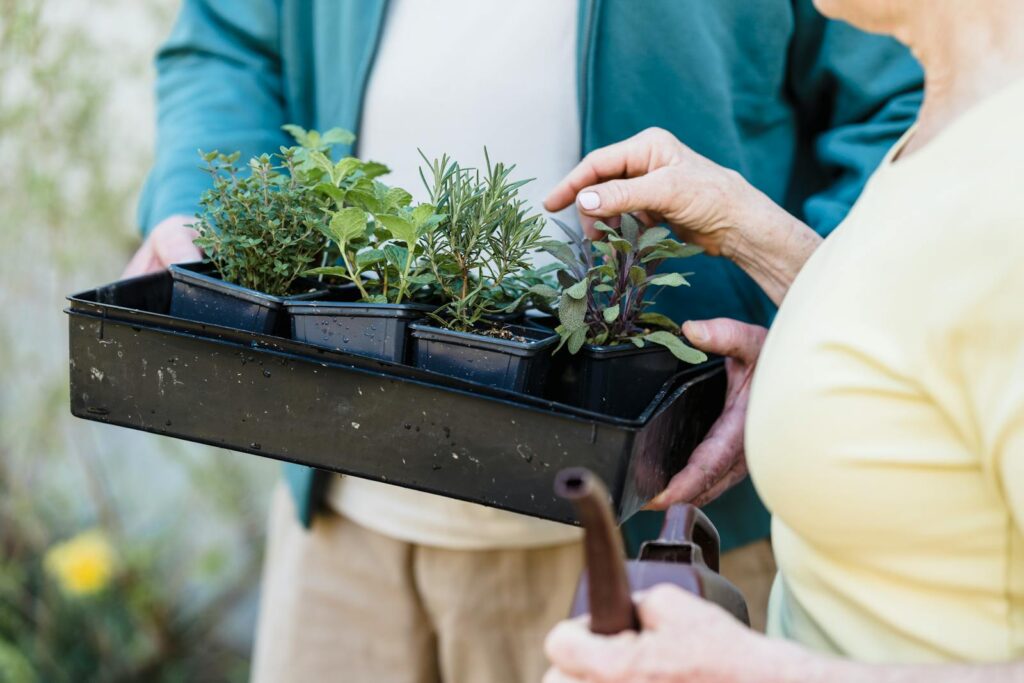
Selecting appropriately sized eco-friendly containers requires balancing environmental considerations with specific plant requirements for optimal growth. Rightsized containers prevent excessive resource use while providing adequate space for root development—containers too large waste soil media and can lead to overwatering issues, while undersized options restrict growth and increase transplanting frequency. Most houseplants prefer containers approximately 1-2 inches larger in diameter than their current pot when repotting, allowing room for growth without overwhelming the root system with excess soil that can remain wet too long. Different plant species have varying container preferences based on their growth habits—shallow-rooted plants like ferns and succulents thrive in wider, shallower containers that maximize surface area, while plants with taproot systems require deeper vessels for proper development.
When selecting sustainable containers, consider the projected lifespan of your plant in that vessel—slow-growing species may remain in one container for years, justifying investment in higher-quality, longer-lasting materials, while fast-growing varieties that require frequent repotting might benefit from biodegradable options that can be composted when outgrown.
Maintaining and Extending Container Lifespan
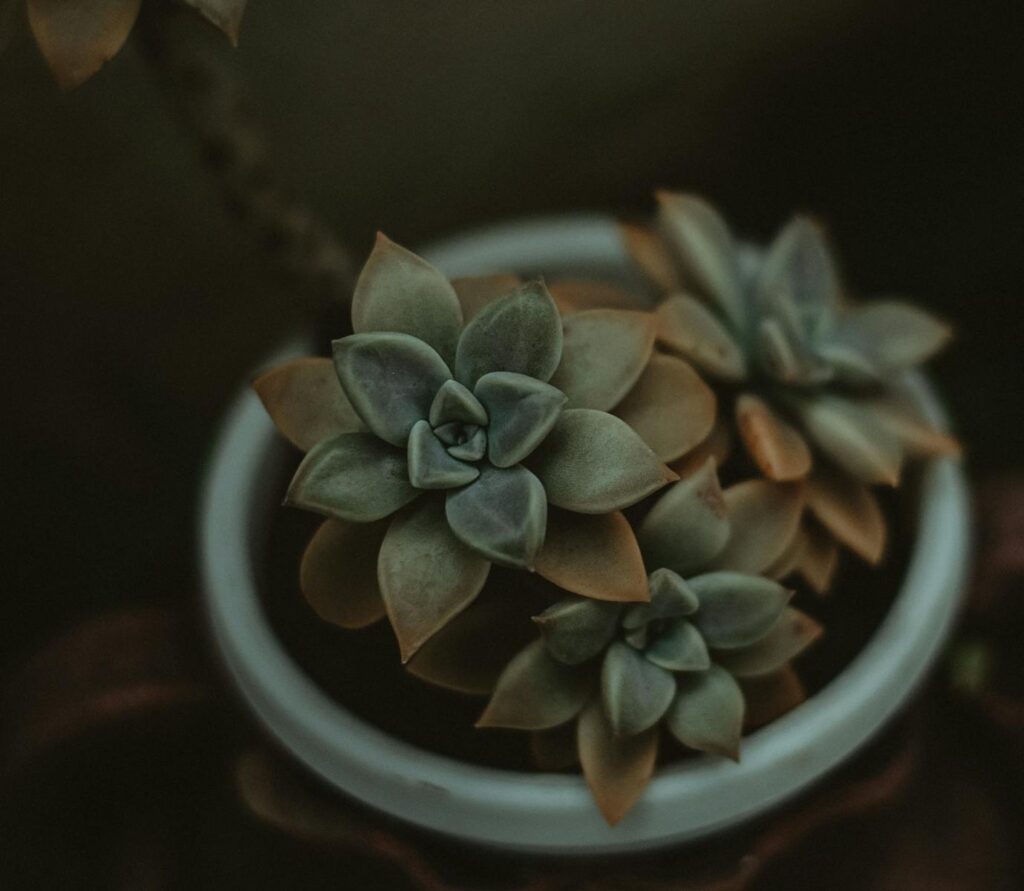
Proper maintenance significantly extends the useful life of eco-friendly containers, maximizing their sustainability benefits through multiple growing seasons. For natural materials like terracotta and wood, regular cleaning with mild soap and water between plantings removes mineral deposits and potential pathogens without harsh chemicals that might compromise the material’s integrity or introduce toxins. Applying natural sealants like linseed oil or beeswax to wooden containers creates a protective barrier against moisture without synthetic petrochemicals, preventing premature deterioration while maintaining breathability. For ceramic and glass containers, careful handling and storage during seasonal transitions prevents cracks from freeze-thaw cycles, while fabric grow bags benefit from gentle washing and complete drying between uses to prevent mold development. Perhaps the most important maintenance practice is proper drainage management—ensuring that saucers don’t allow containers to sit in standing water, which accelerates deterioration of nearly all container materials.
By implementing these simple preservation techniques, even biodegradable containers can serve multiple growing cycles before requiring replacement, further reducing their environmental impact through extended utility.
Building a Sustainable Container Garden Ecosystem
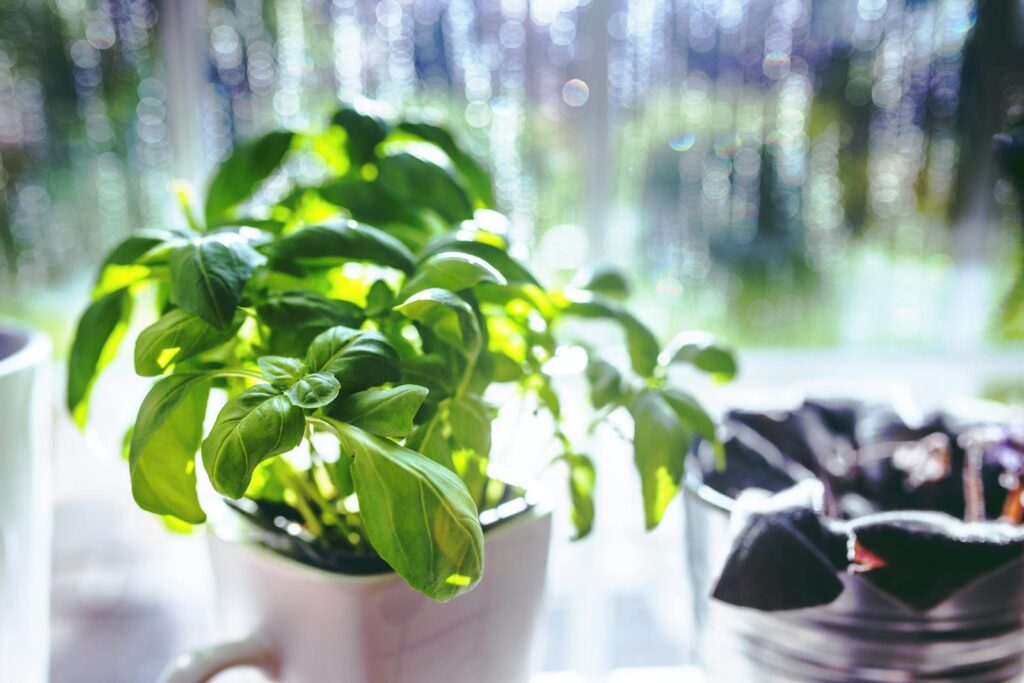
Creating a truly sustainable container garden extends beyond eco-friendly pot selection to encompass a holistic system that minimizes resource consumption and waste. Consider implementing closed-loop practices like capturing drainage water from plants in saucers for reuse on other houseplants, reducing both water consumption and the need for frequent refilling. Establish a small composting system for plant trimmings and spent potting media, creating nutrient-rich additions for future potting needs while diverting organic matter from landfills. When selecting potting media, seek sustainable options like coconut coir-based mixes that avoid peat moss harvesting, which destroys sensitive bog ecosystems, or look for companies that use renewable energy in their production processes. Create a designated repotting station with reusable tools and containers for soil mixing and temporary plant holding, eliminating single-use plastic sheets or containers during maintenance activities.
By approaching container gardening as an interconnected system rather than isolated plants in pots, you can significantly reduce the overall environmental footprint of your indoor garden while creating a more resilient and self-sustaining plant collection that requires fewer external inputs over time.
conclusion
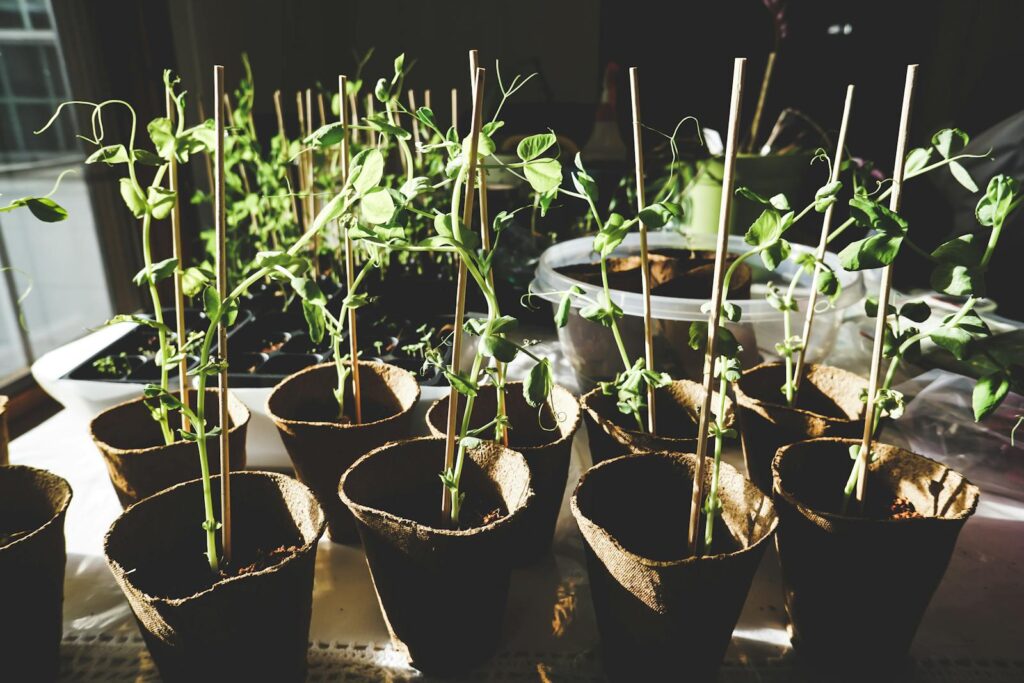
Transitioning to eco-friendly indoor plant containers represents a meaningful step toward more sustainable living practices. Beyond the environmental benefits, these containers often bring unique beauty, character, and functionality that enhance the joy of indoor gardening. Whether you choose handcrafted ceramics that support local artisans, biodegradable options that return to the earth, or creative upcycled vessels that tell stories, your container choices become an expression of values and aesthetic preferences. The perfect sustainable container balances environmental considerations with practical plant needs and personal style—a harmony that brings deeper satisfaction than any mass-produced plastic pot could provide.
As you nurture your plants in these thoughtfully chosen homes, you participate in a growing movement toward mindful consumption and connection with both natural materials and the living plants they support.

